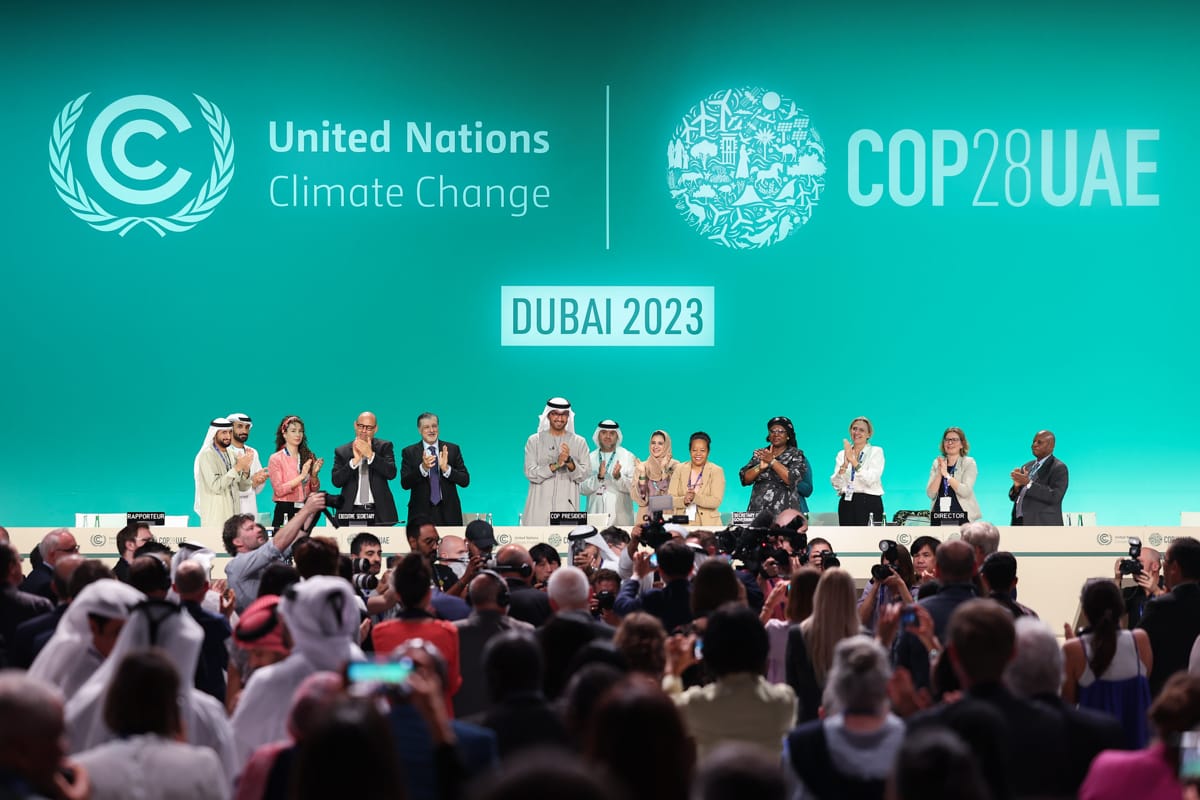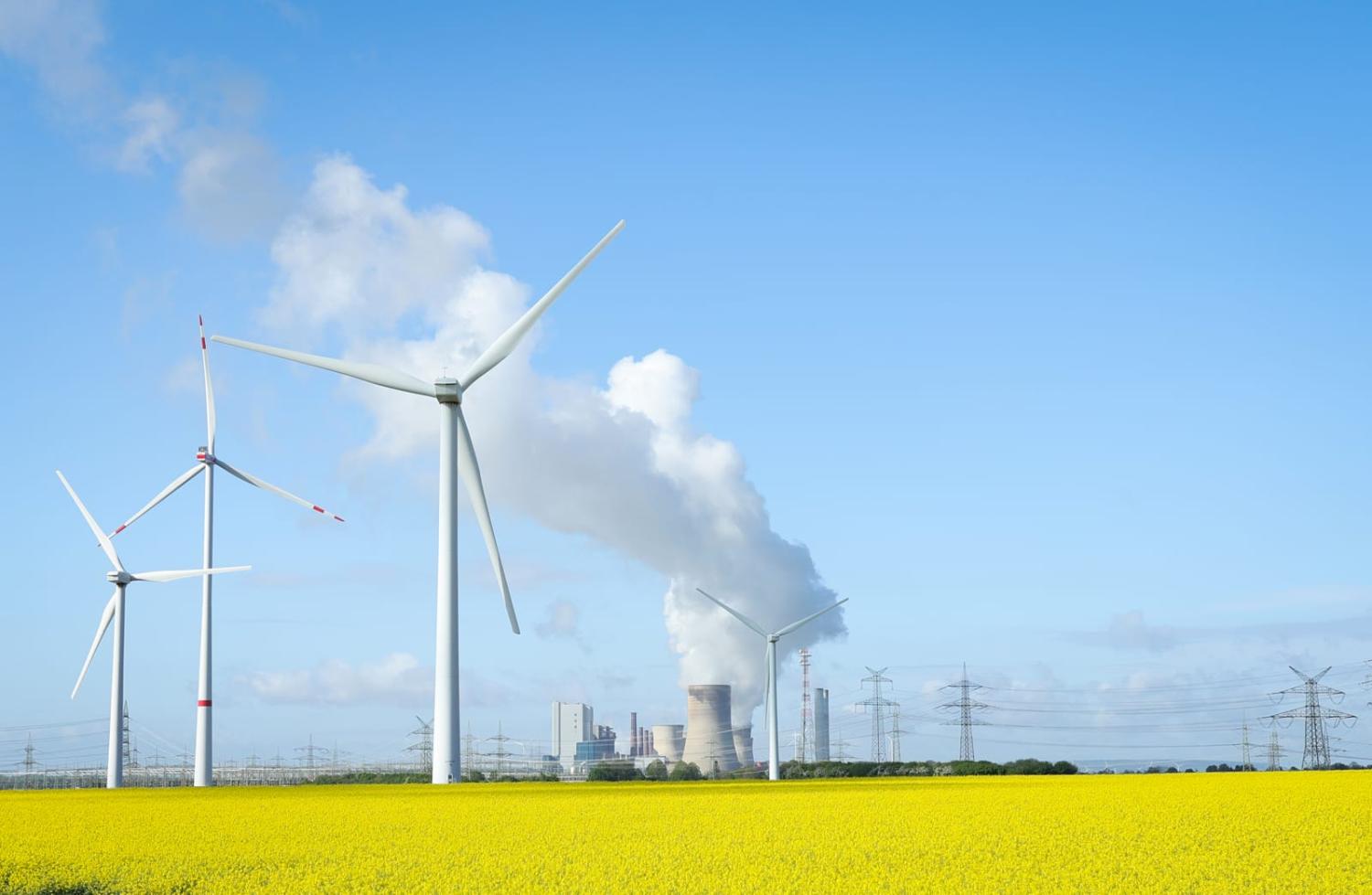The clean energy transition has emerged as a new frontier in the intensifying US–China strategic arms race. Energy transition minerals (ETMs) – an essential component of the shift away from fossil fuels – have become central to the US grand strategy, with the Biden administration outlining a whole-of-government approach to combat China’s dominance in critical mineral supply chains. To withstand decoupling, China seeks to strengthen its position in these supply chains, including for ETMs, by intensifying technology adoption and upgrading its industrial capabilities through a dual-circulation strategy, which relies on increased domestic consumption and innovation.
In the Global South, such great-power competition has translated into the creation of new trading and security blocs and competing mechanisms for green financing. These include the Japan-led Asia Zero Emission Community (AZEC), the G7-led Just Energy Transition Partnership (JETP), the COP-initiated loss and damage fund, as well as China’s new pledge on “small and beautiful” Belt and Road Initiative projects.
This crowded environment has afforded members of the Global South significant latitude to join multiple climate alliances, all of which offer billion-dollar sources of funding to accelerate decarbonisation.
However, the reality is that such multi-alignment barely shifts the dial towards a low carbon economy. While the Global South has seen a rise in coalitional support for decarbonisation at the domestic level, deepening polarisation of climate politics dominates the scene. Behind the daily events of the push to go green, there are historical and structural barriers related to each country’s natural resource endowments, different priority on climate mitigation among 17 SDGs, power distribution across social groups especially for extractive sectors such as coal mining and thermal power plants and people’s willingness to pay for mitigation actions.
For instance, the JETP is a lighthouse project for energy transition and sustainable investment in Indonesia, Vietnam and South Africa – hailed as a transformational “climate change finance deal” to help countries wean off coal. In Indonesia, early retirement of coal-fired power plants is a pilot project of the JETP, and in November 2023, Indonesia’s JETP Secretariat unveiled a draft Comprehensive Investment and Policy Plan (CIPP) outlining different scenarios for utilising the U$20 billion in climate financing.
To date, however, negotiations for the retirement of coal-fired power plants remain stalled, and operational details are yet to be finalised. One reason is that the JETP potentially disrupts established industries – including coal conglomerates and their well-connected political alliances – which have long been the key pillar of the nation’s economic growth. “Just” transition is a political process, and climate alliances driven by geopolitics tend to relegate this kind of reality to the background. A recent article by Trissia Wijaya and Lian Sinclair argues that Indonesia’s decarbonisation is in a mid-transition phase in which fossil fuel companies find ways to shirk responsibility by minimising their costs and liabilities amid the push for a coal phaseout. For these companies, a “fix” such as the adoption of electric vehicles, offers a viable solution to deal with climate issues while maintaining a strategy of capital accumulation.

Another reason multi-alignment does not lead to a low carbon economy is that coal still enables energy transition. The US–China climate arms race has driven friendshoring and nearshoring of energy transition minerals as well as China’s dual-circulation ambition. These actions have shifted the centre of gravity for the energy storage and battery industries, paving the way for resource-rich nations in Africa, Asia and Latin America to enter the critical minerals battleground.
However, these activities have actually increased carbon emissions. According to the International Energy Agency, the market for energy transition minerals had grown to A$530 billion by the end of 2022, while global demand for lithium grew by 300 per cent, cobalt 70 per cent, and nickel 40 per cent in the past five years. Yet this growth is occurring in tandem with the heavy use of coal. As a rough estimate, it takes about two tons of coal to produce a ton of lithium, which would produce around 100 EV car batteries. Rising EV-grade nickel demand also requires huge coal inventories for laterite ore to be processed.
From the plains of Zambia and Congo to the deserts of Chile and formerly quiet Indonesian fishing villages, the extraction of battery materials – which feed into the US–China climate arms race – is riven with environmental and societal problems.
Of the numerous climate summits held in the last few years, COP28 in 2023 in Dubai has been the most important. The Global Stocktake decision includes two key commitments: to limit the global temperature increase to 1.5ºC above pre-industrial levels, and to reduce global carbon dioxide emissions by 43 per cent by 2030 relative to 2019 levels. However, this calls for reduction of global carbon dioxide emissions reduction by 9.0% every year until 2030, much steeper reductio than 5.5% at the time of COVID crisis in 2020.
The Global South is not on the same page with the Global North advocating immediate absolute emissions reduction. In addition, with resource-rich countries keen to accommodate the appetite of the Global North in their rush for energy transition minerals, the likelihood is that we will increasingly see active mining operations and smelting activities which represents significant environmental risk. All of these suggest that 1.5ºC climate goal is already “dead” despite numerous politically correct narratives.

